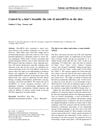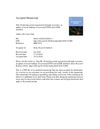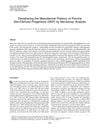Search
forLearn
1 / 1 resultsResearch
5 / 1000+ results
research Control by a Hair’s Breadth: The Role of MicroRNAs in the Skin
MicroRNAs play a crucial role in skin and hair health, affecting everything from growth to aging, and could potentially be used in treating skin diseases.

research A Perspective on RNAi-Based Biopesticides
RNAi-based biopesticides could be safe and effective for pest control with careful development and risk assessment.

research Promoting Axonal Regeneration Through Exosomes: An Update of Recent Findings on Exosomal PTEN and mTOR Modifiers
Exosomes help nerve fibers grow by affecting specific cell signaling pathways.

research Deciphering the Mesodermal Potency of Porcine Skin-Derived Progenitors by Microarray Analysis
Pig skin cells can turn into mesodermal cells but lose their ability to become neural cells.

research The Roles of Non-Coding RNA in the Development and Regeneration of Hair Follicles: Current Status and Further Perspectives
Non-coding RNAs are important for hair growth and could lead to new hair loss treatments, but more research is needed.
Community Join
5 / 39 resultscommunity We need to keep these snake oil companies accountable.
Biotin is being misleadingly marketed as a primary treatment for androgenic alopecia, overshadowing more effective treatments like finasteride and minoxidil. There is a call for increased awareness and accountability to prevent misinformation.
community My Testosterone results before and after Finasteride
Finasteride significantly increased testosterone levels for the user, with no major side effects except watery semen, which was resolved with zinc supplements. The user's hairline stopped receding and slightly improved.
community Has anyone tried Exosomes from Musely or somewhere else?
Exosomes from Musely are being discussed as a topical hair loss treatment containing ingredients like latanoprost, caffeine, cetirizine, melatonin, vitamin D3, vitamin E, and biotin. Users are curious about its effectiveness and potential side effects, noting it may take 4-6 months to see results.
community My Theory Of Androgenic Alopecia
Hair loss is linked to cellular physiology and the IGF-1 to TGF-B1 ratio, not just androgen sensitivity. The theory lacks evidence, while finasteride and minoxidil are effective treatments.
community PP405 Won't Work Long Term: Hair Follicle Damage Due to Abuse of the ISR System
PP405 may damage hair follicles if used long-term, suggesting cycling might be necessary. Combining it with finasteride could help maintain hair growth.